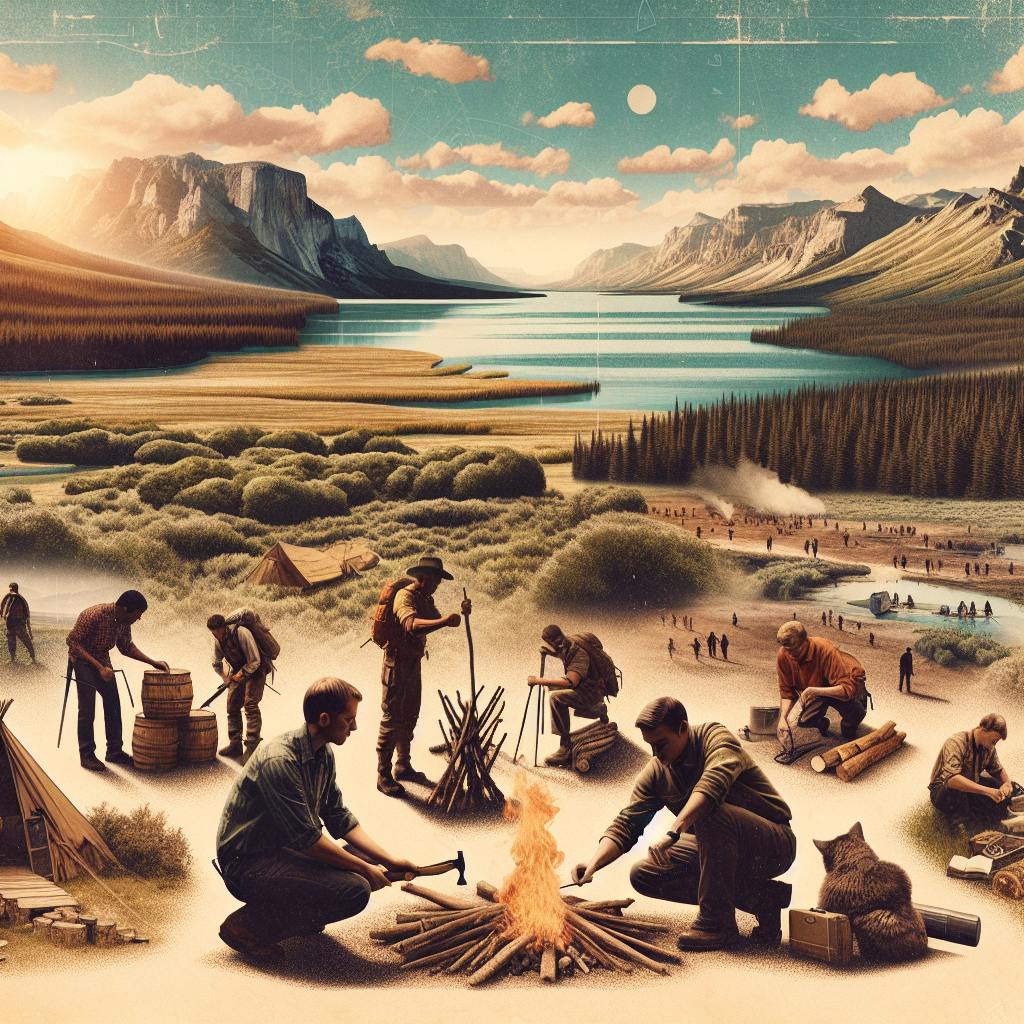In an age of advancing technology and urban living, the art of surviving in the wild has become a rare skill, often romanticized but seldom practiced. Yet, the wisdom passed down through generations of survival experts continues to resonate. From building shelters to finding food, understanding these techniques can be crucial for anyone venturing into the great outdoors. Here, we explore essential survival strategies advocated by experts in wilderness training.
1. The Rule of Threes
One cornerstone of survival is the “Rule of Threes,” which establishes priorities in life-threatening situations:
- You can survive three minutes without air.
- You can survive three hours without shelter in extreme weather.
- You can survive three days without water.
- You can survive three weeks without food.
This rule underscores the importance of immediate action: prioritize finding shelter, securing water, and then searching for food.
2. Fire Craft: The Heart of Survival
Fire provides warmth, cooks food, purifies water, and serves as a signal for rescue. The experts recommend mastering several fire-starting techniques, such as:
- The Bow Drill: This traditional method uses friction to create an ember. It requires practice, but it’s often a reliable option in a survival situation.
- Using Ferro Rods: These produce sparks that can ignite tinder quickly, even in wet conditions.
It’s vital to collect dry tinder and kindling, and know how to maintain a fire once it’s lit, creating a sustainable source of warmth and protection.
3. Water Sourcing and Purification
Water is indispensable for survival, yet it can be scarce in the wild. Experts suggest several methods for finding and purifying water:
- Look for Natural Sources: Streams, rivers, or animal tracks can lead you to water. Rain collection is also a viable option.
- Purification Methods: Always purify water before drinking. Boiling for at least one minute, using water purification tablets, or employing a portable filter can effectively eliminate pathogens.
4. Shelter Building: Protection from the Elements
A well-constructed shelter can mean the difference between safety and exposure to harsh elements. Several types of shelters can be built using natural materials:
- Debris Hut: This is a simple yet effective structure made with branches, leaves, and grass, providing insulation and protection from rain.
- Lean-to Shelter: A more advanced structure that utilizes a fallen tree or rock face as one side and branches for the roof.
Regardless of the type, the key is to insulate against heat loss and shield yourself from wind and rain.
5. Finding Food: Foraging and Trapping
When it comes to food, experts emphasize foraging and trapping techniques, as hunting can be challenging without proper skills:
- Foraging: Familiarize yourself with local flora. Edible plants such as dandelions, clover, and wild berries can offer necessary nutrition. Always ensure you can positively identify plants, as many are toxic.
- Trapping Techniques: Simple traps, such as rabbit snares or deadfalls, can be fashioned from natural materials. Building these traps requires knowledge of animal behavior and movement patterns.
6. Navigation Skills
In the wilderness, losing one’s way can quickly lead to dire consequences. Basic navigation skills are essential:
- Using a Compass and Map: Knowledge of reading a compass and map can help you navigate unfamiliar terrain.
- Natural Navigation: This involves using the position of the sun during the day or the stars at night to maintain direction. The North Star, for example, provides a reliable benchmark for true north.
7. First Aid Knowledge
Understanding basic first aid can significantly enhance survival chances in emergencies. Experts recommend:
- Learning CPR: In case of a medical emergency, knowing how to perform CPR can save a life.
- Wound Treatment: Carrying a small first aid kit and knowing how to disinfect and dress wounds effectively can prevent infections.
8. Mental Resilience: The Hidden Survival Skill
While physical skills are vital, mental fortitude is equally crucial. Survival experts stress the importance of:
- Staying Calm: Panic can lead to poor decision-making. Practicing mindfulness and remaining focused can help in high-stress situations.
- Problem-Solving: Cultivating a mindset that embraces challenges as opportunities for creative solutions will improve resilience.
Conclusion
Wilderness survival is an intricate tapestry woven from knowledge, skills, and intuition. By mastering these techniques, you not only prepare for the unexpected but also reconnect with nature in profound ways. The wilderness offers both challenges and rewards, and with the proper skills, anyone can navigate its intricacies. Embrace this wilderness wisdom; it could one day be the key to your survival.



